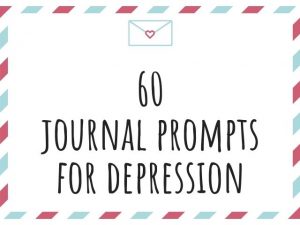During my time as a teacher to international students, I discovered the transformative power of writing games for learners of all ages. Writing is an essential skill, but for many young learners, it can feel like a chore. That’s why introducing fun writing games is a great way to motivate even the most reluctant writer.
Not only do these games make writing fun, but they’re also an effective way to improve literacy skills, critical thinking, and creativity.
So, let’s dive into some of the best writing games for different age groups and needs.
Writing Games for 10 Years Old
Comic Strip Creation (Ages 9-12):

Provide a series of random words and let the child craft a comic strip, emphasizing speech bubbles and main characters.
Here are some example of words that can be used to create a comic strip : Robot, Beach, Mystery, Pineapple, Dream, Rocket, Detective, Jungle, Rainbow, Whisper, Elephant, Guitar, Ghost, Treasure, Chocolate, Alien, Carnival, Potion, Clock, Lighthouse.
Story Chain (Ages 10-13): The first child writes a sentence on a sheet of paper. The next student continues, each with a time limit to heighten the excitement.
If kids need some inspiration then use the prompt below : “In the quiet town of Eldenwood, where nothing unusual ever happened, young Mia stumbled upon a shimmering, mysterious portal hidden in the attic of her century-old home.”
Mad Libs (Ages 8-12):
A classic game where children fill in parts of speech, resulting in a whimsical story.
Here is an example of mad libs : “Today, I went to the [place] and saw a [adjective] [animal]. It was [verb ending in -ing] with a [adjective] [object]. I decided to [verb] and then went to [another place] to eat some [food].”
Acrostic Adventure (Ages 9-11):
Craft acrostic poems using names or subjects, shedding light on adjectival phrases and main ideas. Here is an example acrostic poem.
Across the vast landscapes, our hero roamed,
Determined to find the lost city of gold.
Valley deep, mountain high, he journeyed alone,
Each step taking him closer to legends of old.
Navigating through forests, where shadows would play,
Tales of bravery whispered in winds that did sway.
Underneath starry skies, he’d camp for the night,
Rising with dawn, chasing the first ray of light.
Endlessly onward, his spirit never did fracture,
For he was on a true acrostic adventure.
In acrostic poems, the first letter of each line spells out a word, in this case, “ADVENTURE.” They can be a fun and creative way to express a theme or concept related to the chosen word.
Pen Pal Exchange (Ages 10-14):

Encourage letter writing to family members or distant friends, focusing on proper sentence structure and vocabulary.
Creative Writing Games
Fairy Tale Spin-Off (Ages 7-10):
Choose a fairy tale and rewrite it with a unique twist, perhaps from the villain’s perspective!
For example, the image below shows Cinderella as the villain. Rewrite the story.

Random Word Story (Ages 8-12):
A list of random words becomes the foundation for a short story, challenging creativity. Here is an example of it:
List of Words:
Moon, Basket, Feather, Whisper, Lighthouse
Short Story:
Under the pale glow of the moon, a lone basket sat at the base of the lighthouse. Inside it, a single feather seemed to whisper tales of distant lands and forgotten adventures.
Grocery List Scavenger Hunt (Ages 6-9):
A grocery list transforms into a fun scavenger hunt, teaching adverbial phrases.
Picture Prompt (Ages 9-12):
An intriguing image is the start of a captivating story, focusing on the setting and character development.
For example, write a story about the boy in the picturebelow.

Every morning after waking up, children jot down the most vivid parts of their dreams from the night before. Over time, they can craft these snippets into a fantastical story or even a series of short stories.
Creative Writing Prompts & Journaling:
One of the best ways to encourage children to write is through creative writing prompts. These prompts spark their imagination and allow them to craft unique stories from scratch.
Additionally, introducing kids to the habit of journaling can be transformative. Not only does it improve their writing skills, but it also provides a safe space for self-expression and reflection.
By combining the excitement of creative prompts with the introspection of journaling, kids can enjoy a holistic writing experience that’s both fun and educational.”
Magic Item Creation:
Children are given the task of designing a unique magical item, detailing its appearance, powers, origin, and any curses or drawbacks. Then, they weave a tale around a character who discovers or inherits this item.
Fun Writing Games
Story Dice (Ages 7-10): Dice with words or images dictate the story’s direction.
Sentence Structure Shuffle (Ages 8-11): Jumbled words need rearranging into meaningful sentences.
Here is an example of it:
Jumbled:
“Dog the lazy over fox brown quick the jumped.”
Challenge:
Rearrange the jumbled words to form the original coherent sentence.
Answer:
“The quick brown fox jumped over the lazy dog.”
Adjective Challenge (Ages 9-12): How many adjectives can describe one object?
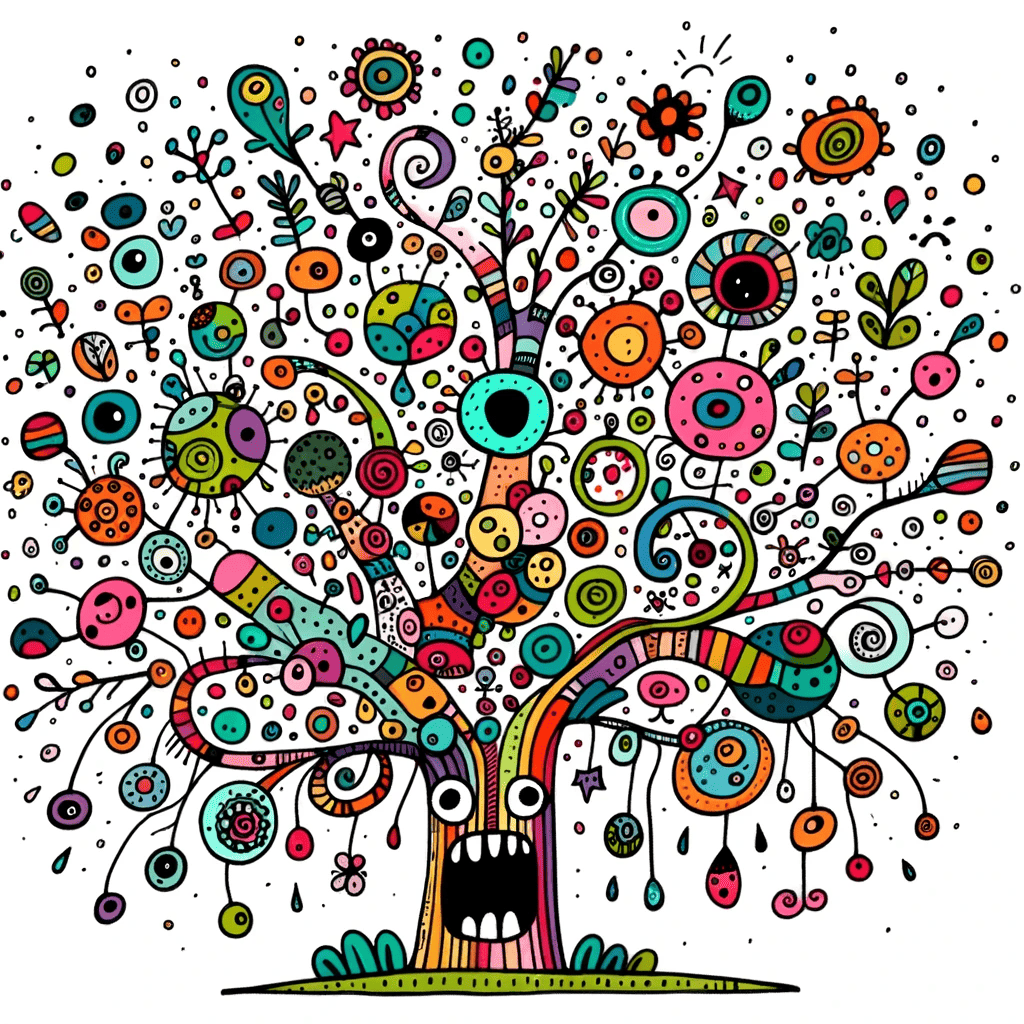
Here is an example of it:
Object:
“Tree”
Challenge:
Describe the object using as many adjectives as possible without repeating any.
Responses:
Tall, ancient, leafy, gnarled, majestic, towering, lush, sturdy, bark-covered, sprawling, shade-giving, evergreen, deciduous, twisted, sun-kissed.
The challenge helps enhance vocabulary and encourages participants to think creatively about the many ways to describe a single object.
Speech Bubble Fun (Ages 6-9): Assign speech to characters in a picture.
Here is an example of it:
Image Description:
A cartoon drawing of a cat staring intently at a goldfish swimming in a bowl.
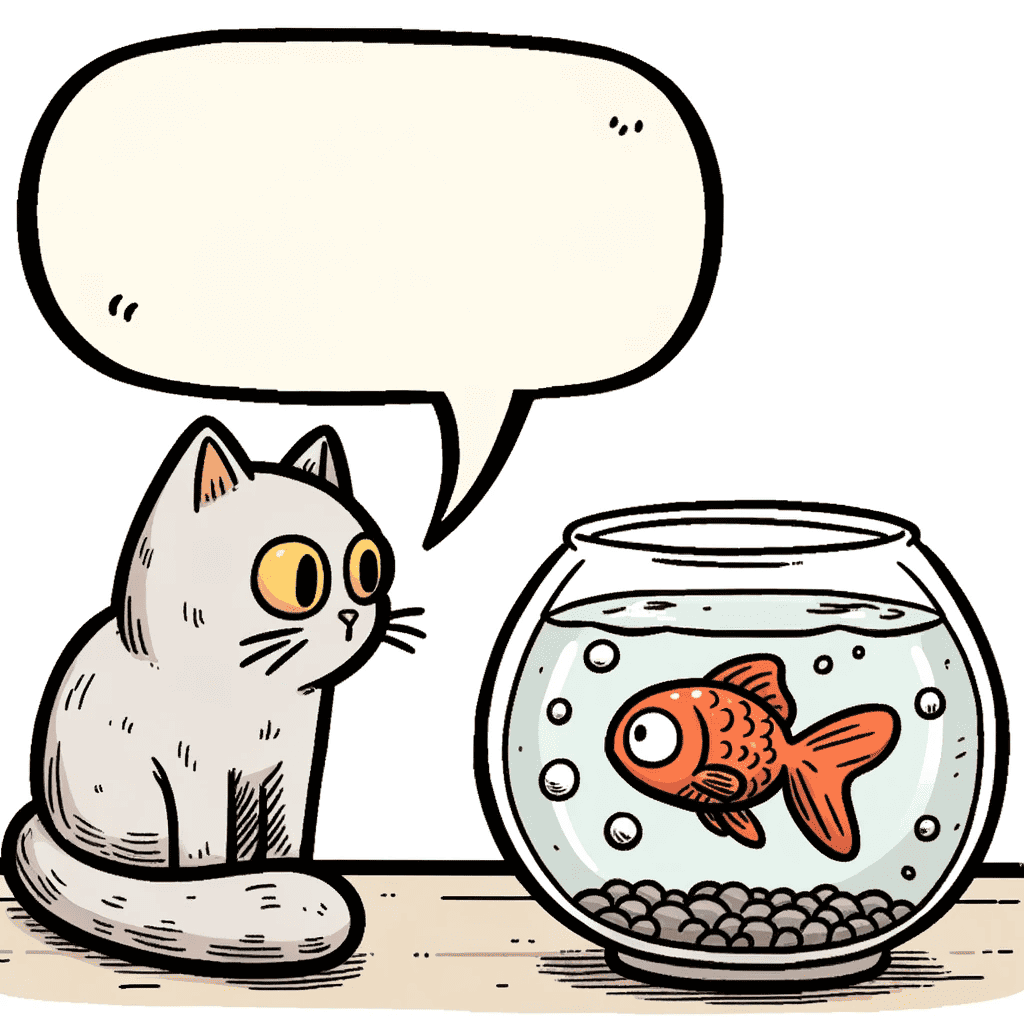
Challenge:
Add a speech bubble to the cat. What is the cat thinking or saying as it gazes at the goldfish?
Sample Speech Bubbles:
- “If only I had thumbs…”
- “Is it snack time yet?”
- “I promise, I’m just admiring your swimming skills!”
- “How do you not get bored going in circles all day?”
- “Hmm, maybe we could be friends?”
The exercise encourages participants to infer emotions, intentions, and thoughts based on visual cues, fostering both creativity and empathy. It’s a fun way to dive into the mindset of characters and breathe life into static images.
First Line Challenge (Ages 10-13): Given just the first sentence, what direction will the story take?
Here is an example of it:
First Line:
“As dawn broke, Marianne discovered a mysterious, ancient-looking map tucked inside her grandmother’s old diary.”
Sample Continuations:
- Curious, she spread it out on the kitchen table, tracing the faded lines and symbols with her finger. The map seemed to lead to a location in their very town, a place she’d never heard of before.
- The map was beautifully detailed, and Marianne couldn’t help but wonder why her grandmother had kept it hidden. The more she looked, the more she felt an urge to embark on an adventure.
The First Line Challenge pushes writers to think creatively and build upon an established scenario, allowing for imaginative exploration and story development.
Writing Games for Kindergarten
Sight Word Bingo (Ages 4-6): Recognizing and marking sight words in this board game.
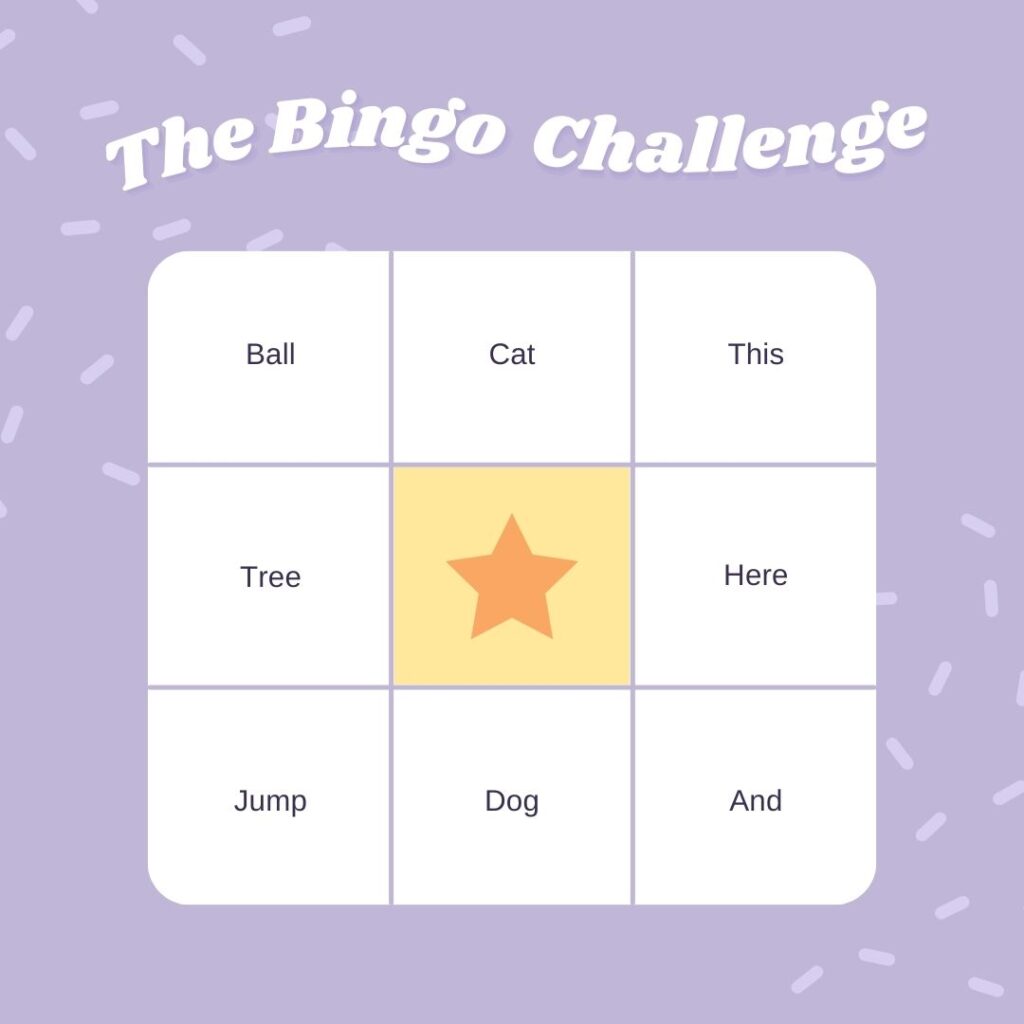
Letter Match (Ages 3-5): Pairing capital letters with their lowercase counterparts.

Storytelling Circle (Ages 4-6): One child starts, and the story circles around, each child adding a line.
Here is how you can set it in the classroom to get everyone involved in the game:
Setting:
A group of children sitting in a circle, perhaps during a classroom activity or around a campfire.

Start:
The teacher or group leader begins a story with a sentence or two to set the scene. You can use a balloon to make it more fun and pass it around, whoever gets the balloon continue with the story.
“For a long time, in the heart of the Enchanted Forest, there was a hidden waterfall that had magical powers.”
Challenge:
Each child, in turn, adds a sentence or two to continue the story, building on what the previous child said.
Sample Continuation:
Child 1: “But no one knew where to find it because the path was guarded by playful pixies.”
Child 2: “One day, a brave young girl named Lila decided she wanted to find this magical waterfall.”
Child 3: “She packed her favorite snacks, a map she drew herself, and set out on her adventure early in the morning.”
Child 4: “As she ventured deeper into the forest, Lila encountered a talking squirrel who offered to help.”
… And so on.
The Storytelling Circle encourages collaborative storytelling, where each participant contributes to the narrative’s progression.
This exercise fosters creativity, listening skills, and group cohesion. As the story unfolds, it often takes unexpected and delightful turns, reflecting the diverse imaginations of the participants.
Picture Story (Ages 5-6): Draw a sequence, then narrate the events.
Word Family Fun (Ages 4-6): Grouping words from the same family, like ‘cat’ and ‘hat’.
Writing Games for KS2 (Ages 7-11)
Vocabulary Expansion (Ages 7-9): Introducing and creating sentences with new words.
Here is an example of it :
Word:
“Brisk”
Definition:
Quick and active; lively.
Challenge:
Use the word “brisk” in a sentence, showcasing its meaning.
Sample Sentence:
“Every morning, Jenny takes a brisk walk around the park before school.”
Related Words:
Fast, speedy, swift, quick, rapid.
The Vocabulary Expansion activity introduces new words to young learners, ensuring they understand the definition and can use them in context.
By also providing related words, children can further enhance their vocabulary and grasp the nuances between similar terms.
Fiction vs. Fact (Ages 8-10): Distinguishing between factual and fictional statements.
Here is an example :
Statement:
“Penguins can fly.”
Challenge:
Determine if the statement is true (fact) or false (fiction).
Answer:
Fiction. Penguins cannot fly; instead, they are expert swimmers.
The “Fiction vs. Fact” activity helps children differentiate between truths and falsehoods or misconceptions. It promotes critical thinking and encourages them to question and verify information they encounter.
Adverb Hunt (Ages 9-11): Spotting adverbs in a story.
Below is an example of adverb hunt
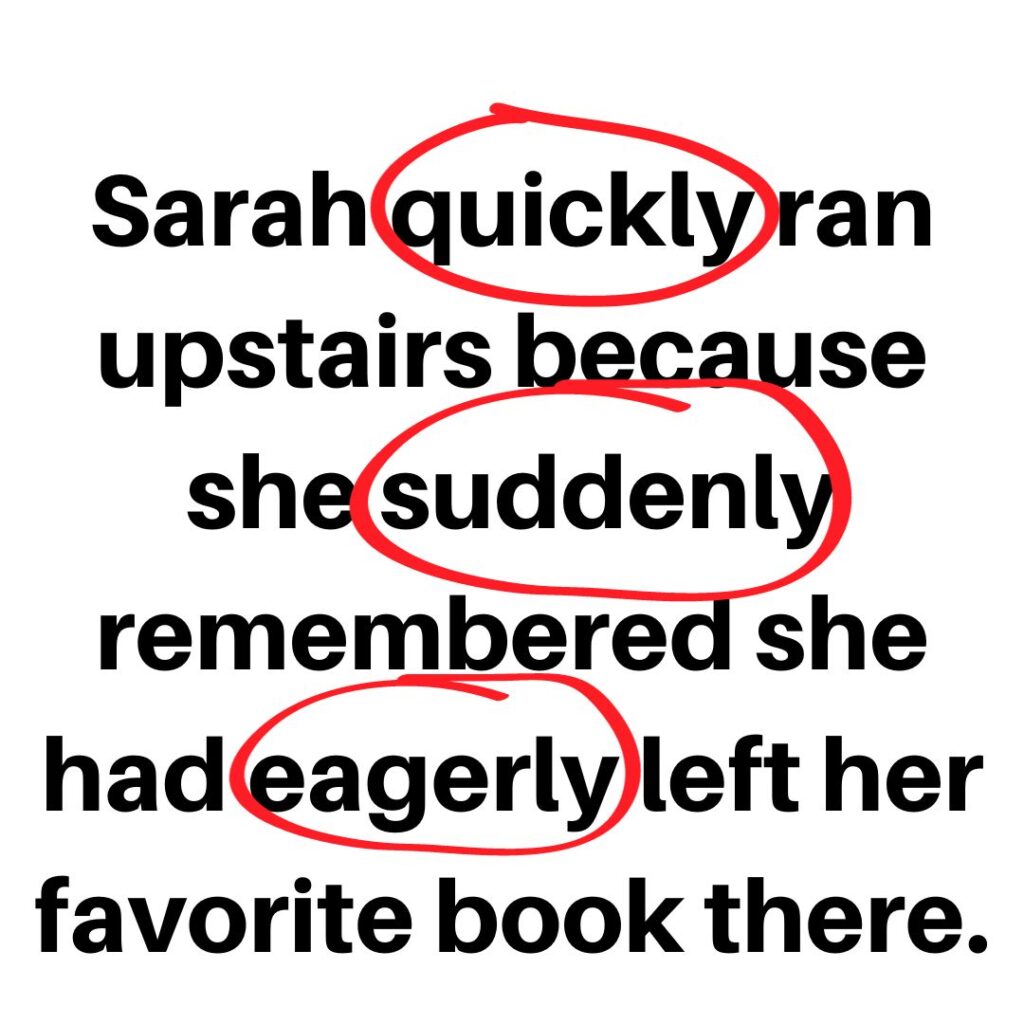
Sentence:
“Sarah quickly ran upstairs because she suddenly remembered she had eagerly left her favorite book there.”
Adverbs Pointed Out:
- quickly
- suddenly
- eagerly
Main Idea Detective (Ages 8-10): Extracting the core message from a story.
Here is an example :
Passage:
“Every weekend, Lucy and her father go to the park. They carry a basket full of bread crumbs and seeds. At the park, they sit on their favorite bench and spread the crumbs and seeds around them. Soon, birds, squirrels, and even ducks come close to eat. Lucy loves watching them and feels a special bond with nature.”
Challenge:
Based on the passage, determine the main idea or theme of the story.
Sample Answer:
The main idea of the passage is Lucy and her father’s weekly ritual of feeding animals at the park, highlighting Lucy’s connection and love for nature.
The “Main Idea Detective” activity encourages children to extract the central theme or primary message from a given text. It helps in improving their comprehension skills and understanding the essence of what they read.
Character Development Workshop (Ages 7-11):
Crafting a backstory for a given character.
Here is an example of it :
Character Profile:

Name: Elena
Age: 12
Appearance: Tall, with curly brown hair and hazel eyes. Always wears a silver pendant.
Hobbies: Reading, sketching, and playing the violin.
Personality Traits: Curious, brave, a bit introverted.
Background: Lives in a seaside town, lost her mother at a young age, has an older brother she’s close to.
Challenge:
Using the character profile, craft a short scene or scenario showcasing Elena’s personality and background.
Sample Scene:
Elena sat on the rocky shore, sketching the distant lighthouse. Touching her silver pendant—a keepsake from her mother—she remembered their shared stories of sea adventures. Inspired, she decided to write a story in her mother’s memory. Her brother joined her side, and they shared a quiet, comforting moment together.
English Writing Games
Synonym Search (Ages 8-11): Identifying synonyms to expand vocabulary.
Grammar Guru (Ages 9-12): Correcting grammar mistakes in a competitive setting.
Tense Transformation (Ages 10-13): Rewriting stories in different tenses.
Descriptive Duel (Ages 8-11): Multiple descriptive ways to talk about a single object.
Object:
“Waterfall”
Challenge:
Describe the object in a vivid and evocative manner, using as many sensory details as possible.
Sample Descriptions:
- “The waterfall looks like a big slide of water coming down from the rocks. It sounds loud and splashes everywhere.”
- “Water from the waterfall flows down like a stream, making a nice sound and making everything around it wet and cool.”
This exercise helps younger participants learn to describe things in their own words, building their vocabulary and observation skills in a fun way.
Idiom Illustrations (Ages 9-12): Literal drawings of idioms with peers guessing their meaning.
Idiom:
“Don’t cry over spilled milk.”
Challenge:
Draw a picture that represents the idiom without using the exact elements from the phrase (i.e., avoid drawing actual spilled milk). Then, write a short explanation of what the idiom means.
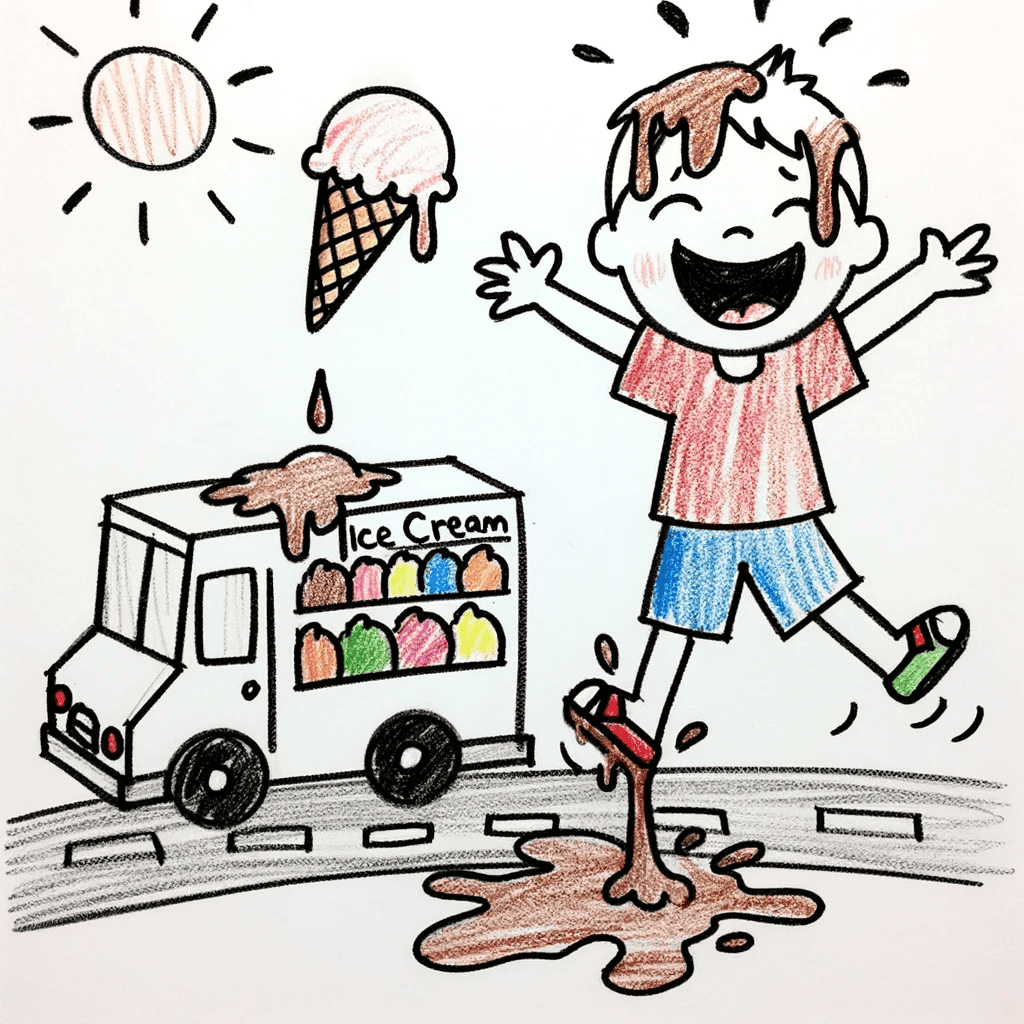
Sample Illustration Description:
A drawing of a boy dropping his ice cream cone on the ground. He looks upset for a moment but then sees a nearby ice cream truck and smiles, ready to get another one.
Explanation:
The idiom “Don’t cry over spilled milk” means that it’s not useful to be upset about things that have already happened and can’t be changed. Instead of being sad about the problem, we should look for a solution or move on.
Online Writing Games
Night Zookeeper (Ages 6-12): An engaging platform that motivates children to write with interactive challenges and feedback. They can create characters, write stories, and even have their creations animated.
- Link to Night Zookeeper
- Payment Status: Costs $12.99/month after a free trial.
Storybird (Ages 5-14): Allows students to create art-inspired stories which they can publish into professionally bound books, merging storytelling and illustration.
- Link to Storybird
- Payment Status: Free basic version. Premium features available for $8.99/month.
Pobble 365 (Ages 7-13): Offers a new image daily to spark students’ imaginations, aiding them in starting their own stories.
- Link to Pobble 365
- Payment Status: Completely Free.
BoomWriter (Ages 8-15): A platform where students can read, write, and vote on serial stories, combining technology with writing.
- Link to BoomWriter
- Payment Status: Basic version is free. Premium version costs $2.99/month.
Write About (Ages 10-16): A community-driven platform where users choose their topics, giving students an authentic audience to help them grow as writers.
- Link to Write About
- Payment Status: Free basic version. Premium features for $6/month.
Parents and guardians should ensure they oversee young users when accessing online platforms, guaranteeing both a secure and educational experience.
Board games to teach writing
- Story Cubes (Ages 6+): Dice with various symbols that players roll to generate prompts for storytelling. Great for creative thinking and narrative skills.
- Once Upon a Time (Ages 8+): A card game where players use their cards to tell a fairy tale, and players build on each other’s stories, leading to unexpected tales.
- Grouch (Ages 7+): Players use letter tiles to create sentences based on a theme, reinforcing grammar and sentence structure.
- Tell Tale (Ages 6+): Players craft stories using illustrated cards with different images. It can be played solo or with others.
- Pictionary (Ages 8+): Primarily a drawing game, but can be adapted for writing. Instead of drawing, players can write descriptive sentences to guess the word or phrase.
- Mad Libs Board Game (Ages 8+): Players compete to fill in missing words from stories, creating funny and outrageous tales based on the popular fill-in-the-blanks books.
- Bananagrams (Ages 7+): More of a word game but can challenge players to create short stories or sentences using their formed words.
- Dixit (Ages 8+): Players craft stories or sentences based on the abstract illustrations on the cards, encouraging imaginative thinking.
- The Storymatic (Ages 12+): A set of cards with prompts that players use to craft stories. Suitable for both solo and group storytelling.
- Go Away Monster! (Ages 3-6): Aimed at younger children, this game helps with vocabulary and sentence formation. Players describe the monsters they ‘catch’.
These games are not only fun and interactive but also serve as tools to improve writing, vocabulary, and storytelling skills. It’s beneficial for players to discuss their stories after the game, offering an opportunity for further learning and creativity.
Incorporating writing games into your child’s learning process is one of the best ways to nurture their creative writing skills.
Not only are these activities a fun way to learn, but they also teach essential writing skills in engaging ways.
From board games to online games, there’s something for everyone. So, the next time your child struggles with writing, introduce them to some of these fun writing games and watch their enthusiasm grow!
Was this helpful?
Good job! Please give your positive feedback
How could we improve this post? Please Help us.

